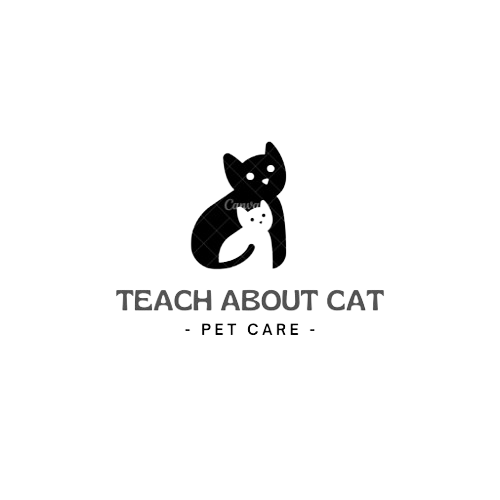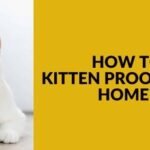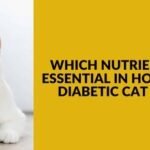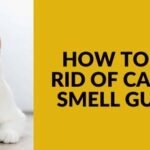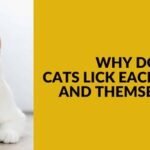When my kitty began to sport a less-than-lustrous coat, with dull patches and an increase in shedding, I knew it was a clear sign of nutritional gaps. Cats, much like humans, require a balanced diet to maintain their health and appearance.
A diet lacking in essential nutrients can lead to a dull coat and bald spots, which are not only unappealing but also a sign that your cat may not be getting what they need. It was through observing these changes that I learned the importance of dietary requirements in controlling shedding.
After extensive research and consultation with vets, I picked the 13 best cat foods designed to reduce shedding and help your feline friend regain their glorious fur. These foods are formulated to meet the nutritional requirements of your cat, ensuring they receive the right balance of omega fatty acids, vitamins, and minerals.
Switching your cat’s feed to one of these options can make a significant difference in the health of their coat, reducing shedding and revitalizing their appearance. From personal experience, I’ve seen my cat’s fur transform from dull and lifeless to vibrant and full, all thanks to finding the best cat food for shedding control.
Best Cat Foods for Shedding
The best cat foods for shedding are specifically formulated to support skin and coat health, featuring high-protein content from quality meat sources such as chicken, fish, and turkey. These diets are enriched with essential vitamins and minerals, alongside fatty acids like omega-6, to nourish your cat’s fur and reduce excessive shedding. By incorporating foods like Chicken & Salmon Rustic Blend or Homestead Turkey Rustic Blend into your cat’s diet, you can significantly improve their coat’s condition, leading to a sleeker appearance and less hair around your home.
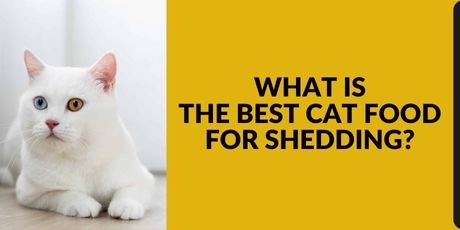
How Often Should Your Cat Be Shedding?
At the onset of spring and as fall descends, your cat will naturally shed its fur. This twice-a-year shedding is a biological response to prepare for the heat of summer and the cold of winter, trading their coats for comfort against the elements. It’s when you start to notice tumbleweeds of cat hair across your furniture and clothes that this natural cycle becomes apparent.
However, indoor kitties may shed lightly all year long due to constant exposure to artificial light. Unlike their outdoor counterparts, who follow a more defined seasonal shedding pattern, indoor cats’ shedding can seem constant, making vacuuming a frequent task. This difference highlights the impact of our home environments on our pets’ natural processes.
If your cat begins shedding excessively outside of these normal patterns, with symptoms like constant biting, licking, or significant hair loss, it could indicate an underlying condition. Breeds such as Maine Coons and Persian Blues are naturally heavy shedders, but any sudden change warrants a vet appointment to ensure your fur baby is healthy.
Also Read: Can Cats Eat Fish Food?
What Causes Cat Shedding?
If your cat’s constant shedding has you at your wit’s end, know that, thankfully, there are solutions. More often than not, the fluff on your furniture isn’t due to any serious underlying condition but rather common causes like seasonal changes, diet, or stress. By pinpointing these triggers, you can better manage your feline friend’s shedding and keep both your cat and your home looking their best.
Hormonal Imbalances
Hormonal imbalances, particularly those affecting reproductive hormones in cats, can lead to dermatosis a skin disorder manifesting as alopecia or hair loss. If your kitty is experiencing unusual shedding, it’s crucial to have a veterinarian run tests to determine if a hormonal imbalance is the reason behind it. In some cases, reproduction hormone therapy may resolve the shedding issue, restoring your cat’s coat to its natural glory.
Parasites
On another note, both external and internal parasites, such as tapeworms and ringworms, could be silently infecting your dear kitty, leading to poor coat health. These parasites can be spotted in your cat’s fecal matter or may dig into the skin and burrow into hair follicles, causing infections that result in intense shedding. Prompt detection and treatment are key to preventing these parasites from compromising your cat’s coat and overall well-being.
Unbalanced Diet
Just as humans need a balanced diet to maintain healthy tresses, cats require specific nutrition for their fur to flourish. An unbalanced diet that lacks essential vitamins and minerals can lead to a coat that loses its shine, and, even worse, your feline may experience constant shedding and hair loss. High-quality cat food, specifically designed to promote a healthy coat, is crucial in preventing these issues and ensuring your cat’s fur remains lustrous and full.
Allergies
Allergies can also wreak havoc on your cat’s coat, with cats suffering from seasonal, food-borne, or sensitive reactions to pollen or certain food groups. These allergies can cause bald spots, itches, rashes, and other skin issues, leading to shedding. Identifying and eliminating these common causes by choosing hypoallergenic options can significantly limit shedding, helping your feline remain comfortable and free from the distress allergies cause.
Fleas
Flea infestation is far from a pleasant experience for any pet owner. When your cat falls victim to these pests, chronic shedding can become a significant issue, with your kitty scratching away at their dull, lovely hair. The hair loss becomes particularly noticeable around the feline’s hindquarters, a direct result of licking the spot to get rid of fleas and their irritating saliva. This relentless cycle can lead to a marked increase in shedding and discomfort for your pet.
Dry Skin
Many pet parents are surprised to find that dry skin can contribute significantly to their cat’s shedding. Like humans, cats can suffer from dandruff, with flaky spots on their coat signaling patched, dry skin. The cat’s grooming saliva often aggravates this condition, leading to hair fall and making it crucial for pet owners to address their fur baby’s skin health to maintain that luscious coat.
Poor Grooming Habits
Poor grooming habits, whether infrequent or excessive, can further cause or aggravate shedding. A cat not receiving the right balance in its diet may lack the necessary nutritional needs, leading to an unkempt coat, prone to shedding, hair loss, and even skin infections. Addressing these grooming habits, alongside ensuring a balanced diet, can mitigate shedding and promote a healthier coat.
Pregnant or Lactating
Hormonal changes during pregnancy and the lactation period can cause your kitty to shed more than normal. It’s not uncommon to notice bald spots on her belly as the kittens nurse, a direct result of shedding acceleration. However, this should resolve once the kittens are weaned, as your cat’s body adjusts back to its pre-pregnancy state.

Controlling a Cat’s Shedding
Controlling a cat’s shedding is about managing it to a normal amount and trying to prevent the excessive loss that leaves your couch and clothes covered in fur. While completely stopping shedding is impossible, you can win this battle to a great extent. Following a few simple steps, including regular grooming and maintaining a balanced diet, can significantly reduce the amount of hair you find around your home.
Bathing
If you’re lucky enough to have a cat that’s not completely averse to the idea of bathing, giving them a thorough bath fortnightly can remove dirt, debris, and dead hair from their coat. For the more typical cat that believes in throwing temper tantrums at the sight of a bathroom, you might win them over with treats, go crazy for wet wipes, or use a leave-in conditioner to moisturize their fur. The result? A great looking coat and a happier, less shed-prone feline friend.
Brushing
Brushing your kitty’s hair daily can significantly reduce the amount of dead undercoat that gets caught in their fur, thus reducing the constant shedding. For cats with short to medium coats, combs with soft bristles are perfect, while those with long, dense fur may benefit more from wire-bristle brushes. This daily routine not only keeps your cat’s coat looking great but also strengthens the bond between you and your pet.
Supplements
In addition to brushing, incorporating cat supplements into their diet can provide proper nutrition that’s crucial for maintaining a luscious coat and healthy skin. Fatty acids are particularly beneficial, as they can help reduce hairballs and control cat fur shedding. Together, these practices ensure your cat remains healthy, happy, and as shed-free as possible.
Also Read: Corn Gluten Meal in Cat Food
Things to Consider When Shopping for Best Cat Foods for Shedding
When shopping for cat supplies, especially food, proper planning and thorough research are key to picking the right cat food that will ensure your fur baby maintains a lovely coat. It’s crucial to pay attention to the ingredients list, looking for high-quality proteins, omega fatty acids, and other nutrients essential for skin and coat health, to support your cat’s overall wellbeing and reduce shedding.
Allergens
For cat parents dealing with their furry friend’s allergy or intolerance, often undetected, constant shedding can be a frustrating symptom. Common allergens like wheat, soy, grains, and gluten found in cheaper cat foods and certain protein sources can aggravate shedding. It’s important to watch out for these ingredients on the ingredient list and consider novel protein sources such as lamb or bison, which can be a great choice for reducing adverse reactions and promoting a healthier coat.
Artificial Flavors and Preservatives
As a cat food critic, I understand that our pets don’t care for interesting colors or flavors; these are targeted at pet parents to buy more attractive cat food. However, artificial flavors and preservatives offer zero nutrition and can impact a cat’s health adversely. Opting for a healthier formula with a minimum of chemicals is essential. Let this guide you in the right direction when choosing the best cat foods for shedding, steering clear of unnecessary additives for the well-being of your furry companion.
Budget
When navigating the budget for your cat food, it’s crucial to ensure your kitty doesn’t end up on a diet filled with meat by-products and low-quality ingredients common in cheap cat food. While there are exceptions, finding quality cat nutrition at a lower price point means you must tread carefully, looking for brands that prioritize natural ingredients without resorting to filler ingredients like corn, soybean meal, or brewers rice.
Omega Fatty Acids
Omega fatty acids are a must in your cat’s diet to help maintain the skin and coat health. When you pick cat food, search for a generous supply of these nutrients on the label, which should explicitly say the food contains this essential nutrient. These fatty acids play a crucial role in preventing dry skin and reducing excessive shedding, making them a key factor in choosing the right food.
Protein
For protein, remember that your cat relies on this nutrient to build a strong, healthy body. The source of the protein is equally important, with lean chicken, lamb, bison, and salmon being great options. Always read the label on the cat food to check if one of these is listed among the first three ingredients, ensuring it’s a major constituent in your cat’s diet.
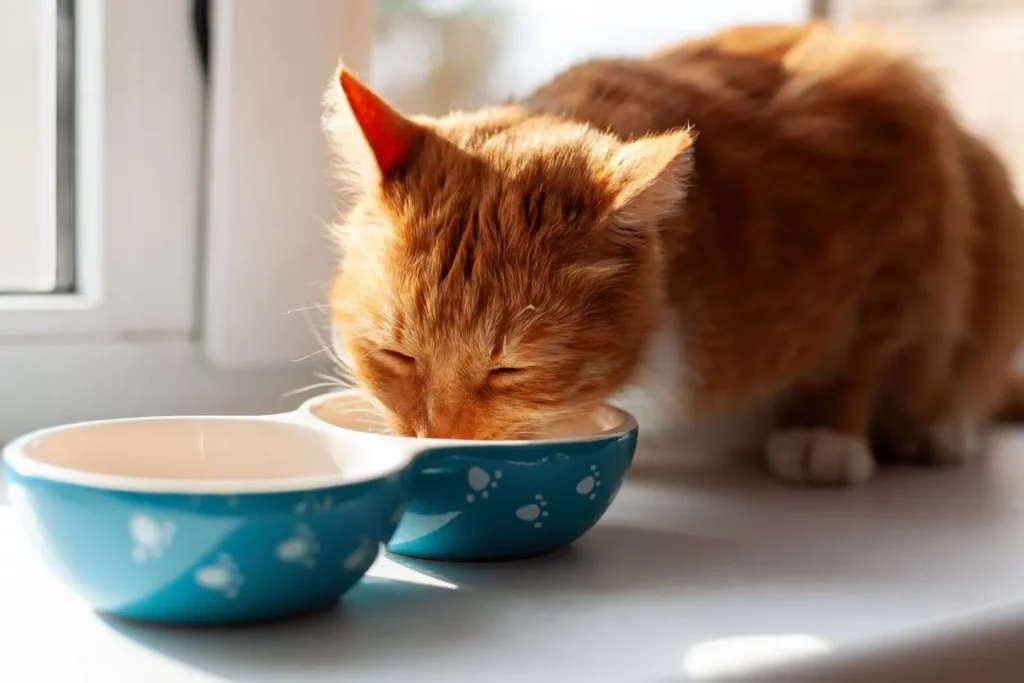
Keep Fur Where It Belongs With the Best Cat Food for Shedding
In the wild, cats shed their coat twice a year, in spring and autumn, to adapt to the changing seasons. An outdoor cat may follow these timelines naturally, but indoor cats often shed at any time, though you might notice periodic increases in the amount of hair adorning your sofas or clogging your vacuum cleaner. This variation in shedding patterns emphasizes the need for a diet that supports coat health year-round.
If your feline is shedding too much hair, addressing your cat’s diet whether it’s dry, wet, raw, or homemade with tailor-made cat food can be a dietary way of reducing hair loss. Resources like Teachaboutcat offer advice on the best cat food for shedding, providing ways to keep your kitty looking sleek and well-groomed. Choosing the right food can significantly impact your cat’s overall health and minimize shedding, keeping your home fur-free and your pet healthy.
Is Shedding a Bad Thing?
Shedding is one of those natural bodily functions in cats that can become a problem for us rather than them. It’s a reaction to various factors, including seasonal changes or the state of their health. For pet owners, dealing with the result of shedding can feel like a constant battle to clean cat hair off the best furniture and tackle the chore of dealing with hairballs. Yet, it’s important to remember that shedding, in moderation, is perfectly normal and indicates your cat is renewing their fur.
How Can You Control Your Cat’s shedding?
To control your cat’s shedding, looking beyond the underlying infections that might reduce the hair deposited around your house is an important step. A change in diet can be incredibly effective. Switching to high-quality cat food can have a significant impact on your cat’s hair loss, as the diet directly influences your cat’s shedding, general health, skin, and coat. Focusing on nutrition that supports skin health and fur quality can lead to less shedding and a happier, healthier cat.
How Does Diet Affect a Cat’s Coat?
The saying “You are what you eat” holds as true for cats as it does for humans. Cat hair, made of keratin, a type of protein, springs from the outer layer of a cat’s skin, which can produce up to 25,000 hair strands per square centimetre. Considering an average-sized cat may have over 70 million hairs in total, it’s clear why many hairs make the skin the largest organ on a feline’s body. Maintaining the health of the skin and coat uses up the majority of a cat’s protein intake, highlighting the crucial role of diet in ensuring a glossy, healthy coat and reducing shedding.
If your feline is consuming high-quality protein, this will be translated into:
- More stable skin structure to promote stronger hair roots
- More stable follicle structure in each hair
- Reduced need to replace damaged hair and dead skin
The better the quality of the food your cat eats, the better the skin and coat can be maintained.
What is the Best Cat Food to Reduce Shedding?
Cats are obligate carnivores, their bodies finely tuned to process meat efficiently.
The key to reducing shedding lies in cat food rich in protein, fats, vitamins, and minerals, crucial for maintaining healthy skin and coat.
How Can Protein in Cat Food Reduce Shedding?
Protein serves as the building blocks for cats’ muscles, skin, and fur. When felines eat, they metabolise amino acids from the protein portion of their food to produce new proteins they need, like keratin. Being natural meat-eaters, cats are best adapted to metabolising animal protein, which offers an amino acid profile in an easily digestible form. Comparing different protein sources, the biological value a percentage indicating how well a protein source allows a cat to metabolise it shows that those with a higher biological value mean cats eat less but still get all the amino acids required for a healthy coat and reduced shedding.
Also Read: Cat Eats Other Cats Food
What Do Fats Do in Cat Food to Stop Shedding?
Besides protein, fat is another viable source of energy in cat food, delivering around twice as many calories as carbs.
Fat also delivers fatty acids, such as:
- Linoleic acid
- Arachidonic acid
- Omega-3 and omega-6 fatty acids
Fats, particularly high levels of omega-3 and omega-6 fatty acids, are crucial in cat food as they maintain the integrity of a cat’s cell membranes. These nutrients not only help keep your feline’s skin healthy but also ensure their healing responses are in top form, significantly reducing shedding by promoting a strong, resilient coat.
The most digestible fats for cats are animal fats, such as:
- Chicken fat
- Pork fat
- Beef tallow
- Fish oil
Animal fat also tastes great for a cat, meaning that your kitty will go wild about getting the benefits that it delivers.
Wherever form your cat’s food comes in, you should aim for the highest-quality ingredients possible. This applies to:
- Wet food
- Dry kibble diets
- Homemade food
- Diets enriched with cat jelly or cat gravy
- Raw cat food
In a cat’s diet, rich in animal protein and animal fat, these components play a pivotal role. Beyond merely serving as high-calorie diets, they improve the health of the skin and coat, reducing shedding and keeping your cat looking sleek and well-groomed.
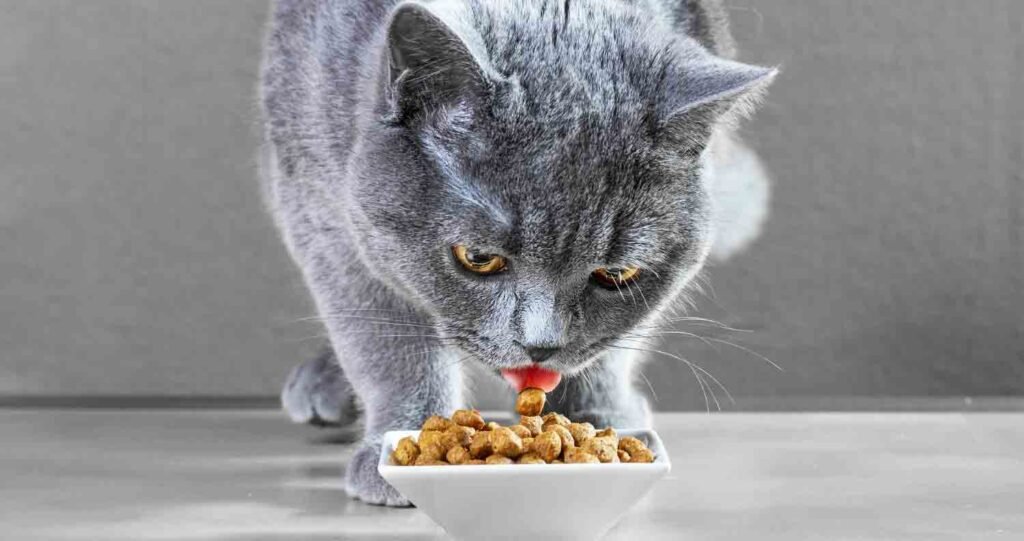
How Much Animal Protein and Animal Fat is Necessary in Anti-Shedding Cat Food?
If you want to feed your feline a cat food to reduce shedding, you should check the label for the following values:
Nutrient type and Ideal percentage
- Animal protein – More than 50%
- Fat – Up to 20%
- Carbs/fibre – Maximum 3%
What about Carbs and Cheap Cat Food?
Cats don’t need carbs in their diet, but many cheaper foods use:
- High proportions of carbohydrates
- Undefined or cheaper meat products as ingredients
Food allergies in cats are often triggered by protein sources of inferior quality found in cheaper cat foods. The true ingredients hidden in the ingredients list, like grains and cereals, can be cagey about the actual meat product used. While you might hope such cat food helps reduce shedding, it can actually make the problem worse.
Does Teachaboutcat Have Cat Food for Shedding?
Teachaboutcat cat food is the best you can give your cat if shedding is a problem.
We want your cat to get the best possible nutrition every day, so all our diets are formulated on the following principles:
High protein levels
High protein levels in meals are crucial, with each serving packed with twice the animal protein of the industry standard, including essential nutrients like taurine to support your cat’s health.
Whole meats only
Choosing whole meats only, our cat food offers human-grade meat without meat derivatives or unnecessary fillers, making it both tasty and nutritious, perfect for senior cats and kittens alike.
Vet-formulated recipes
Our vet-formulated recipes at Teachaboutcat are carefully designed to meet your cat’s biological needs, ensuring they get the best nutrition possible.
Sustainable Production
We’re committed to sustainable production, aiming to erase our carbon pawprint with 100% recyclable packaging and ethically sourced ingredients.
Fussy Eater Approved
Even if your cat suffers from the “picky eater” syndrome, just pop open a tin of our food and watch them meow in anticipation. Our range is designed to please even the fussiest eaters.
Depending on your cat’s life stage, preferences, and known sensitivities, you can choose any of our products to help you control your feline’s shedding.
How Long Will It Take To See a Difference in Your Cat’s Coat?
Cats typically replace their coat every three to six months, depending on the length of their hair.
After you switch to Teachaboutcat, you may notice a difference within these timelines:
Timeline and Effect
Within a week
You should notice:
- Food allergies starting to clear up
- Less compulsive grooming and skin irritation
After two months
You will see:
- Less matting and a shinier coat
- Improved skin condition
- Reduced shedding
Within four months
The effects you will spot are:
- A sleek, shiny, and healthy-looking coat
- Fewer hairballs
- Less intensive grooming
Life-long
Your kitty should suffer from fewer skin and coat problems and should shed considerably less than with inferior diets
What Cat Food Helps with Shedding?
While it may be alarming to see your cat’s fur fall out, it’s a normal, natural process in a cat’s life, much like humans shed skin and hair. For cats, shedding is one of those things that owners can help manage through the shedding process by choosing the right nutrition that supports skin and coat health.
Why Does My Cat Shed its Fur?
Cats go through hair growth cycles, where they shed dead fur to make way for new, healthy fur to be replenished. This is a necessity to prevent irritation on the skin and ensure dead fur is removed efficiently, often aided by combing and grooming. Shedding helps keep the cat’s body healthy, and owners can support their cat in this process by performing regular combing and grooming to remove loose, dead hair from the body, thereby maintaining the cat’s skin and coat in a healthy condition.
Conclusion
Managing your cat’s shedding is not just about regular grooming but also significantly influenced by their diet. The right cat food, enriched with high-protein sources and essential fatty acids, plays a pivotal role in maintaining a healthy skin and coat, thereby reducing excessive shedding. Foods like the Chicken & Salmon Rustic Blend or Homestead Turkey Rustic Blend are perfect examples of how specific diets can address this common concern. By choosing a balanced, high-quality diet and maintaining a regular grooming routine, you can keep your feline friend looking sleek and their shedding under control, ensuring a cleaner home and a happier, healthier life for your beloved pet.
People Are Also Interested In:
Is there a Cat Food that Helps Reduce Shedding?
Yes, certain cat food formulas are designed to help reduce shedding. Look for options like Chicken & Salmon Rustic Blend or Homestead Turkey Rustic Blend, which boast high-protein content from quality meat sources such as chicken, fish, and turkey, along with vitamins and minerals that are essential for healthy skin and coat in cats.
Also Read: Cat Dropping Food When Eating
What Can I Give My Cat to Reduce Shedding?
To reduce shedding, offer your cat High-Quality Cat Food that supports a healthy diet. Foods rich in proteins and essential fatty acids provide nutrients that improve the condition of the skin and coat, reducing concerns about shedding. A balanced diet ensures your cat lives a longer, healthier life.
What Food is good for Cat Fur?
For good cat fur, focus on food rich in fatty acids that maintain skin and coat condition. Linoleic acid and omega-6 fatty acid, found in animal tissues, chicken fat, and vegetable oils like corn oil and soybean oil, are beneficial.
Can You Reduce Cat Hair Shedding?
Yes, you can reduce cat hair shedding. Although shedding is not an ailment to be cold treated, regular brushing once a week can eliminate excess hair in a manner that helps to remove fur that would otherwise end up on your furniture, floor, and bed.
